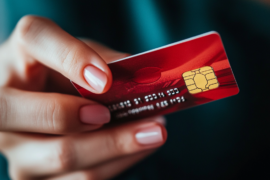This article may contain references to products or services from one or more of our advertisers or partners. We may receive compensation when you click on links to those products or services. Nonetheless, our opinions are our own.
A simple mistake. A happenstance disaster. A financial emergency. Whatever you call it, they happen. When you have a financial emergency, you must work hard to pay for it, get out of the situation, and repay as agreed upon. There are many ways to plan for financial strategies, strategies one can use, and accounts or sources one can tap into to arrive at a solution that does not put your finances at long-term risk. The key to overcoming these challenges is to take immediate, strategic action and use all available resources wisely.
This guide outlines 15 proven strategies, supported by financial experts and government assistance programs, to help you navigate financial hardship effectively.
- Budget with Financial Apps
- Calmly Assess the Situation
- Take from Emergency Funds
- Avoid Unnecessary Borrowing
- Use Payday Loans for Instant Cash
- When to Use Your Credit Card
- Sell What Assets You Can
- Seek Resources
- Avoid Disrupting Essential Payments
- Cut Your Expenses
- Look at Extra Income Opportunities
- Take Out a Loan
- Negotiate with Creditors
- Communicate with Family
- Stay Positive and Focused
- Final Thoughts
- Recommended Reads
Budget with Financial Apps
Manage a financial emergency by managing your finances. Use budgeting or expense-tracking apps to monitor cash flow, make payments, set spending alerts, and more. This is how you navigate carefully when in a financial tight spot.
Calmly Assess the Situation
Start by evaluating your income, savings, expenses, and debts. Create a quick financial summary to see where you stand.
Tip: Use budgeting apps like Mint or YNAB (You Need a Budget) to track spending and find areas to cut costs.
A financial emergency has to be assessed. This will identify the money you need and help you define alternative options to minimize how much you pay to cover such an emergency.
Take from Emergency Funds
If you have savings set aside, now is the time to use them wisely. Withdraw only what’s necessary to cover urgent expenses.
Tip: If you don’t have an emergency fund, start building one now—aim for 3-6 months’ worth of expenses in a high-yield savings account (e.g., Ally Bank, Marcus by Goldman Sachs).
If you have an emergency savings account, this is the first place to go when paying for an emergency. If you have savings accounts tied to other goals, do not withdraw from those accounts unless necessary.
Avoid Unnecessary Borrowing
It can be tempting to immediately apply for a payday loan, personal loan, or line of credit. Before you go borrowing, cut back on expenses, look at your available savings, and seek ways to maximize the income you already have coming in. Only then will a loan make sense.
Use Payday Loans for Instant Cash
If you have a gap in income or a financial emergency where you need cash within the next 24 hours and cannot wait, apply for a payday loan. This is why payday loans exist. They can be repaid off the next paycheque and are an excellent strategy to help you manage financial strain.
When to Use Your Credit Card
If you have an existing credit card ready, consider pulling from it for a financial emergency. Only do this if it won’t put you past 30% credit utilization and
Ensure you can repay what you borrow within the shortest period possible. If you put too much strain on your credit card to cover financial emergencies, you can easily sink it. A payday loan or personal loan is often a better choice.
Sell What Assets You Can
If you have items of value, consider selling them to generate cash:
- Sell electronics, clothes, or collectibles on eBay or Poshmark
- Rent out a room on Airbnb
- Lease your car using platforms like Turo
For a short-term bump in your finances, look to what assets you can sell for a sizeable profit. Furniture in storage, instruments you don’t play, gym equipment you don’t use, jewelry, small appliances, electronics, and vehicles are all high-value assets you can use to get cash.
Seek Resources
Look to local organizations for help with utilities, food, medical expenses, and more. Local charities, churches, and government programs can help with short-term financial aid and free up parts of your budget to rededicate to your emergency. You should also consult with a financial advisor for long-term strategies. These professionals will use CRM for financial advisors to devise a practical strategy for managing your money.
Several government programs and nonprofit organizations provide financial aid:
- SNAP (Supplemental Nutrition Assistance Program) – Helps with food costs.
- LIHEAP (Low-Income Home Energy Assistance Program) – Offers help with energy bills.
- 211.org – Connects you with local financial aid resources
Avoid Disrupting Essential Payments
Focus on necessities like housing, utilities, food, and medical costs. Cut out non-essential spending (subscriptions, dining out, entertainment) until your situation stabilizes.
Do not take from essential expenses to pay for financial emergencies. Seek out the funds elsewhere to cover such an emergency. Do not put any of your essential services or essential payments at risk.
Cut Your Expenses
Identify where you can cut expenses. Cut utilities. Buy food on sale that you can cook at home rather than going to restaurants. If you are renting and can move to a more affordable unit, this is something else you may want to consider cutting expenses to cover your financial emergency.
Look at Extra Income Opportunities
Earning extra income quickly can help bridge the gap. Popular options include:
- Freelancing (Upwork, Fiverr)
- Gig Work (DoorDash, Instacart, Uber)
- Selling Unused Items (eBay, Facebook Marketplace)
Lock in a part-time job. Set up a side gig, such as a rideshare. Become a freelancer. Find a way to earn extra income regularly to ease the burden of paying for a financial emergency you can’t afford.
Tip: Prioritize quick-cash opportunities that align with your skills and availability.
Take Out a Loan
Many lenders offer hardship programs that allow reduced or deferred payments. Contact your credit card companies, mortgage lenders, and utility providers to discuss options.
Example: Banks like Chase and Wells Fargo provide temporary relief during emergencies—call their support lines to inquire.
Speak to a bank or credit union about applying for a loan. Short term loans can help you cover major expenses. However, they require a strong payment history and average-to-high credit rating. Always compare interest rates and avoid high-interest loans at every opportunity.
Negotiate with Creditors
Consider negotiating with creditors, utility companies, and any party you must pay for during financial distress over the next 30 days. Seek a temporary period of reduced payment requirements, a deferral, or similar help.
Many lenders and service providers offer hardship programs that allow you to defer payments, lower interest rates, or restructure loans during emergencies.
✔ Call your credit card company, student loan provider, or utility company and ask about financial hardship options.
✔ Request lower monthly payments or temporary forbearance if you’ve lost income.
Communicate with Family
During hardship, lean on your romantic partner, best friend, or family member. Share your financial situation. Seek emotional support, as most people need it during emergencies. Consider asking a family member for financial assistance.
Stay Positive and Focused
As difficult as it can be, approach financial emergencies with a problem-solving mindset. Be positive. Be focused. Don’t let stress hinder clear decision-making.
Once your situation stabilizes, build a 3-6 month emergency fund, automate savings, and create a budget to prevent future crises.
Tip: Use the 50/30/20 budgeting rule—50% needs, 30% wants, 20% savings.
After you come up with a plan, all you have to do is fulfill the plan’s terms. That’s the key.
Final Thoughts
Handling a financial emergency requires quick action, smart decisions, and leveraging available resources. By following these 15 expert-backed strategies, you can navigate financial difficulties and regain stability.

Reviewed and edited by Albert Fang.
See a typo or want to suggest an edit/revision to the content? Use the contact us form to provide feedback.
At FangWallet, we value editorial integrity and open collaboration in curating quality content for readers to enjoy. Much appreciated for the assist.
Did you like our article and find it insightful? We encourage sharing the article link with family and friends to benefit as well - better yet, sharing on social media. Thank you for the support! 🍉
Article Title: 15 Strategies for Financial Emergencies
https://fangwallet.com/2025/02/10/15-strategies-for-financial-emergencies/The FangWallet Promise
FangWallet is an editorially independent resource - founded on breaking down challenging financial concepts for anyone to understand since 2014. While we adhere to editorial integrity, note that this post may contain references to products from our partners.
The FangWallet promise is always to have your best interest in mind and be transparent and honest about the financial picture.
Become an Insider

Subscribe to get a free daily budget planner printable to help get your money on track!
Make passive money the right way. No spam.
Editorial Disclaimer: The editorial content on this page is not provided by any of the companies mentioned. The opinions expressed here are the author's alone.
The content of this website is for informational purposes only and does not represent investment advice, or an offer or solicitation to buy or sell any security, investment, or product. Investors are encouraged to do their own due diligence, and, if necessary, consult professional advising before making any investment decisions. Investing involves a high degree of risk, and financial losses may occur including the potential loss of principal.
Source Citation References:
+ Inspo












































